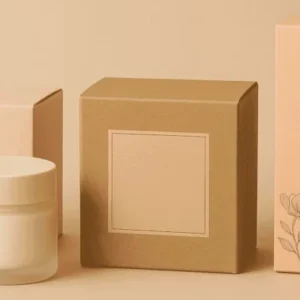Feeling like you’re constantly walking on a tightrope? Anxiety has a way of creeping into your thoughts, clouding your judgment, and draining your energy. But you’re not alone and more importantly, you’re not powerless. Proven anxiety therapy approaches can help you reclaim your calm and confidence, moving you from overwhelmed to empowered.
Let’s explore 10 effective, research-backed strategies that therapists use to help individuals break free from chronic worry and mental overload. Whether you’re exploring therapy for the first time or refining your current treatment plan, these methods offer clarity and practical support.
1. Cognitive Behavioral Therapy (CBT): The Gold Standard in Anxiety Therapy
CBT is widely regarded as one of the most effective forms of anxiety therapy. It focuses on identifying and challenging unhelpful thought patterns and replacing them with healthier, more realistic perspectives.
-
Helps reduce irrational fears
-
Promotes emotional regulation
-
Encourages constructive behavior changes
CBT empowers clients to become their own therapists between sessions, reinforcing growth outside the therapy room.
2. Exposure Therapy: Facing Fears with Confidence
This specialized anxiety therapy technique gradually exposes individuals to feared situations or thoughts in a controlled, safe environment. It’s commonly used for phobias, panic disorder, and social anxiety.
Here’s why it works:
-
Desensitizes the brain to fear triggers
-
Reduces avoidance behaviors
-
Builds self-trust and resilience
Over time, anxiety loses its grip as the individual proves to themselves that they can handle discomfort without retreating.
3. Mindfulness-Based Anxiety Therapy: Grounding in the Present Moment
Mindfulness-based therapies integrate meditation, body awareness, and breathwork to help manage anxiety symptoms. These approaches, including Mindfulness-Based Stress Reduction (MBSR), train the brain to observe anxious thoughts without reacting to them.
This method is effective for:
-
Generalized anxiety
-
Social anxiety
-
Stress-related disorders
Mindfulness enhances emotional tolerance and reduces the intensity of anxious episodes, especially when practiced consistently.
4. Dialectical Behavior Therapy (DBT): Balancing Acceptance and Change
Originally developed for borderline personality disorder, DBT is increasingly used in anxiety therapy due to its powerful emotion regulation techniques. It incorporates mindfulness, distress tolerance, interpersonal effectiveness, and emotional regulation.
What makes DBT distinct is its focus on accepting your emotional experience while simultaneously working to change harmful patterns.
Benefits include:
-
Enhanced self-awareness
-
Improved coping with intense emotions
-
Strengthened relationship skills
5. Acceptance and Commitment Therapy (ACT): Making Room for Anxiety
ACT doesn’t aim to eliminate anxiety entirely. Instead, it encourages individuals to accept anxious thoughts and feelings while committing to actions aligned with their values.
This approach shifts the focus from controlling internal experiences to building a meaningful life despite them.
ACT is particularly effective when:
-
Anxiety is chronic or generalized
-
Perfectionism and control issues are present
-
Personal values feel disconnected from daily actions
6. Somatic Experiencing: Healing Anxiety Through the Body
This body-centered anxiety therapy focuses on the physiological responses to stress and trauma. Somatic Experiencing helps release stored tension and reestablish a sense of safety in the nervous system.
Why it matters:
-
Anxiety is often stored physically as muscle tension or hyperarousal
-
Tracking body sensations helps interrupt panic cycles
-
Builds mind-body connection for holistic healing
Many people find this approach deeply healing, especially if traditional talk therapy hasn’t resolved persistent anxiety symptoms.
7. Group Therapy for Anxiety: Healing in Community
Anxiety therapy in a group setting offers something that individual therapy sometimes can’t: shared experience. It’s incredibly validating to realize others face similar struggles and healing can multiply in connection.
In group therapy, you can:
-
Practice social skills in real-time
-
Get diverse perspectives
-
Receive and give support
Group formats vary from psychoeducational to process-oriented, depending on your needs and comfort level.
8. Biofeedback and Neurofeedback: Harnessing Technology in Anxiety Therapy
These innovative approaches use real-time monitoring of brainwaves or body signals to teach you how to regulate stress responses.
Biofeedback tracks things like heart rate, muscle tension, and skin temperature.
Neurofeedback focuses on brainwave activity to increase calm and focus.
What you gain:
-
Enhanced self-regulation
-
Decreased physiological symptoms of anxiety
-
A more engaged role in your therapy process
These tools make the invisible effects of anxiety visible and changeable.
9. Integrative Therapies: Combining Holistic and Clinical Methods
Anxiety therapy doesn’t have to stick to one model.
Many therapists now blend evidence-based approaches with holistic techniques such as:
-
Breathwork
-
Nutritional counseling
-
Yoga and movement
-
Reiki or energy work
This approach acknowledges that healing is multifaceted and that what works for one person might not work for another.
An integrative model respects your unique body, mind, and spirit and brings them into alignment.
10. Choosing the Right Anxiety Therapy for You
With so many options available, choosing the right anxiety therapy can feel overwhelming—but it doesn’t have to be. Here’s how to make an informed choice:
Consider:
-
The severity and type of your anxiety (panic disorder vs. social anxiety, etc.)
-
Your preference for structure or flexibility
-
Your goals for therapy (symptom relief, self-awareness, life changes)
Ask potential therapists:
-
What modalities they use
-
Whether they specialize in anxiety
-
What outcomes they’ve seen with clients like you
Key Takeaways
Living with anxiety doesn’t mean living in fear. Proven methods in anxiety therapy are making a real difference for millions of people. From rewiring thought patterns in CBT to cultivating presence through mindfulness, there’s a path that matches your needs and helps you feel like yourself again calmer, clearer, and more confident.
Whether you’re just beginning this journey or looking to deepen your healing, working with a skilled professional can shift everything. You deserve support that understands your struggles and gives you tools that truly work.
Looking for compassionate, expert anxiety therapy in Philadelphia? Finding the right fit locally can connect you with a professional who understands your community, your challenges, and your goals. Don’t wait to take the first step empowerment begins with action.
Want To Read More Articles? Explore This Websites:- topbizlists.com




